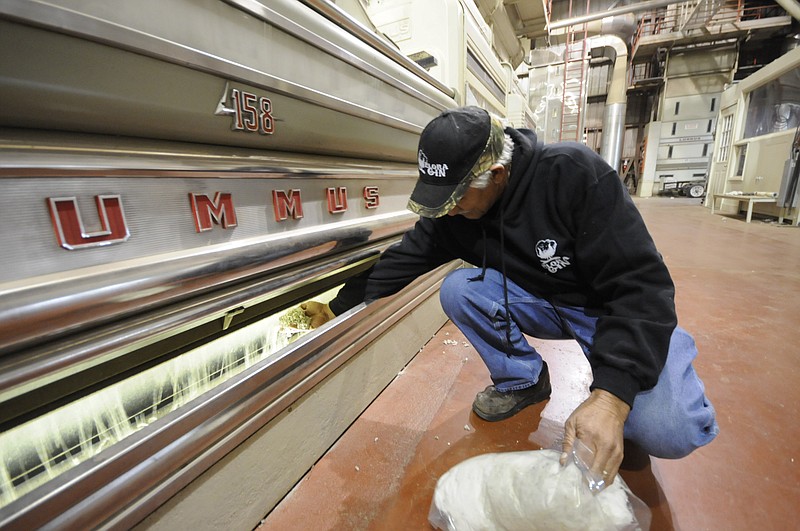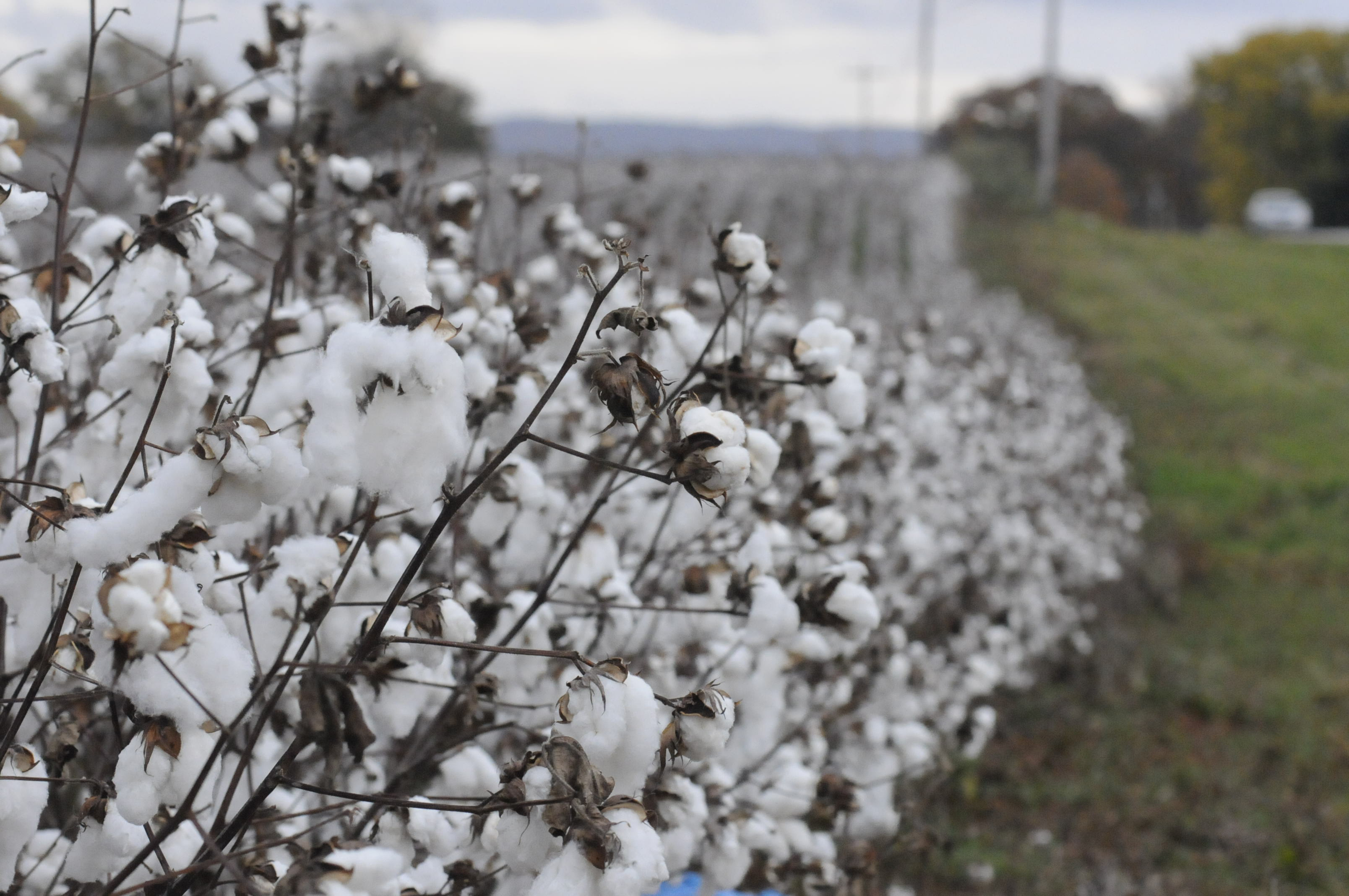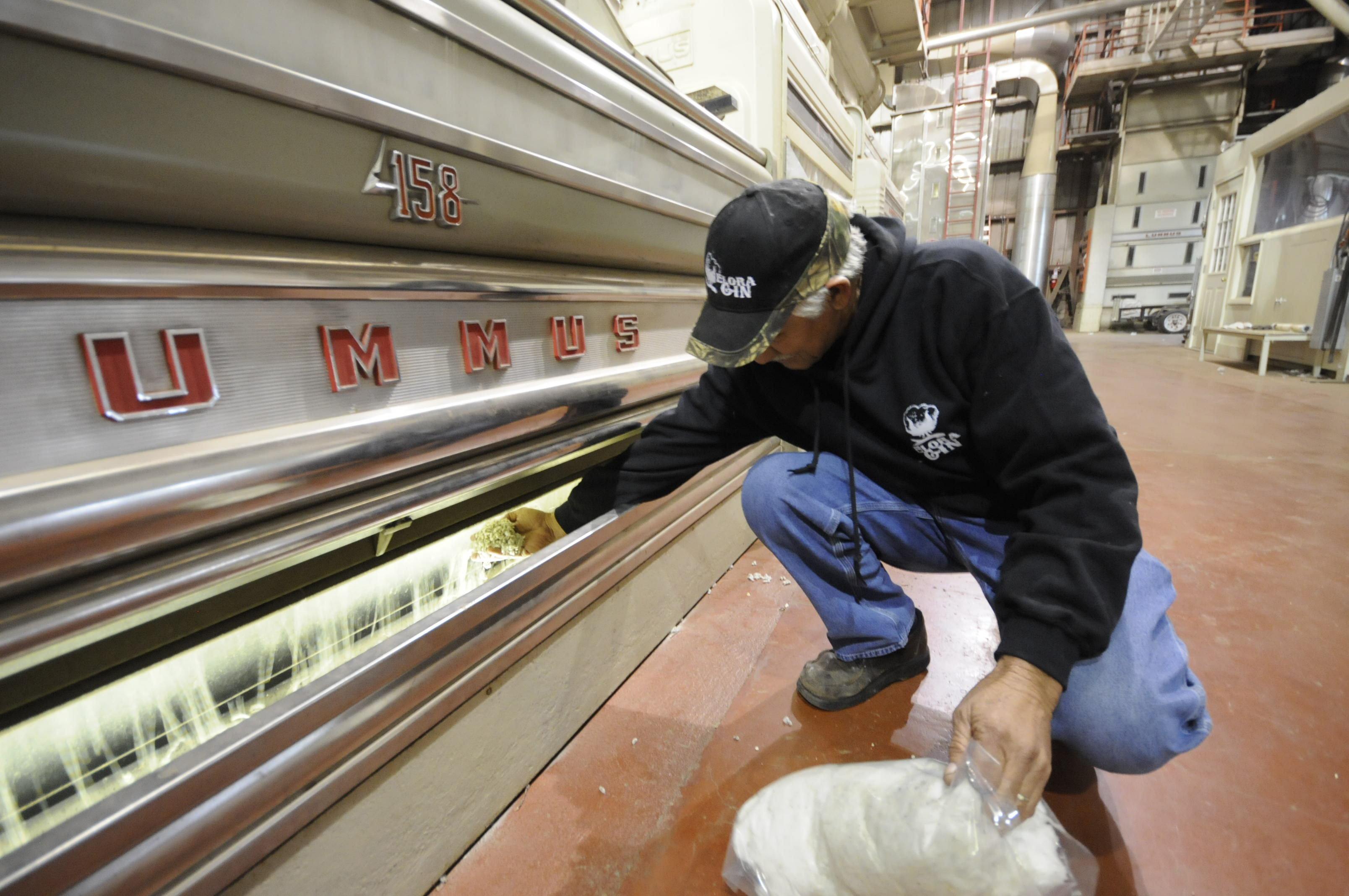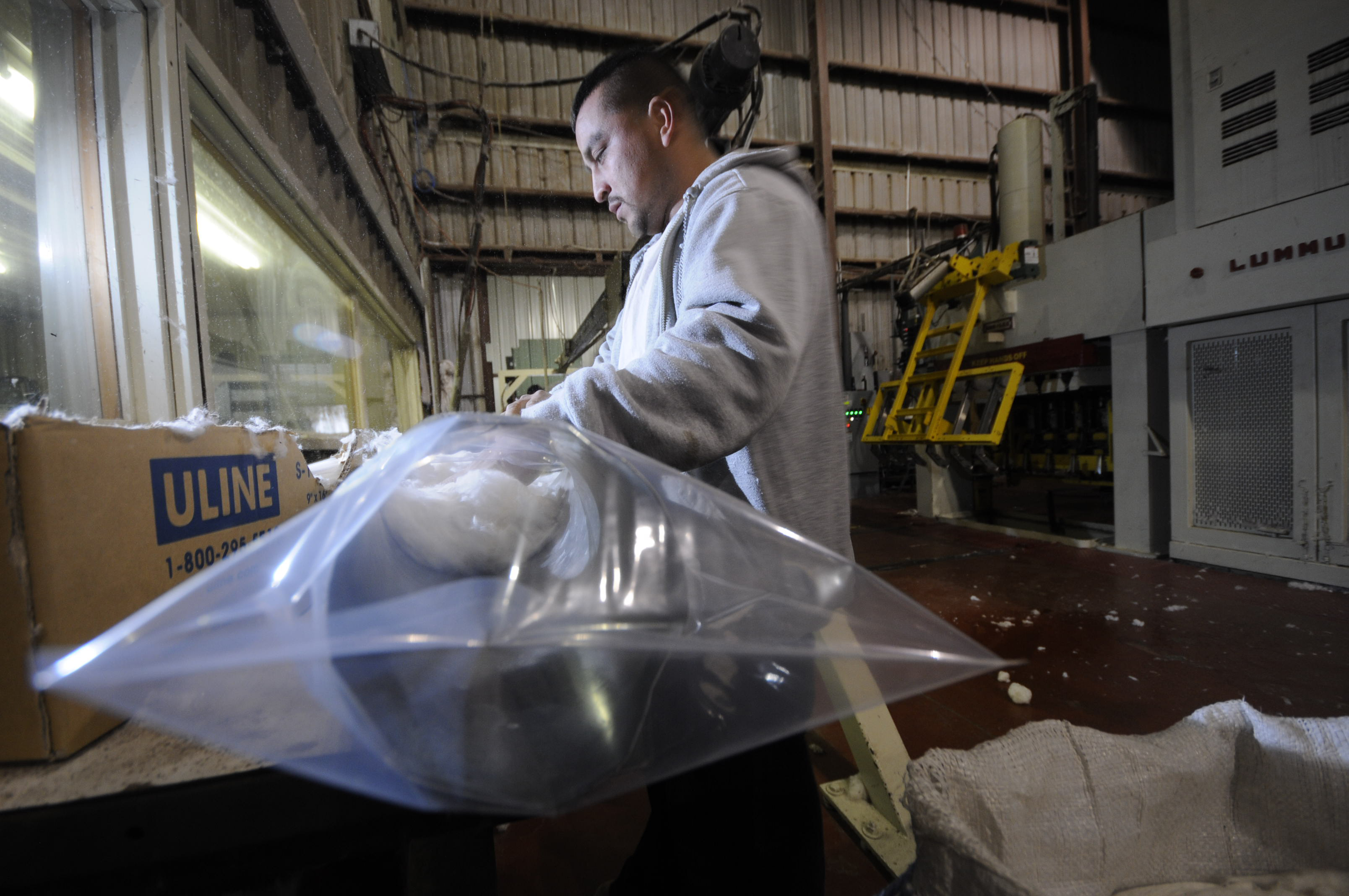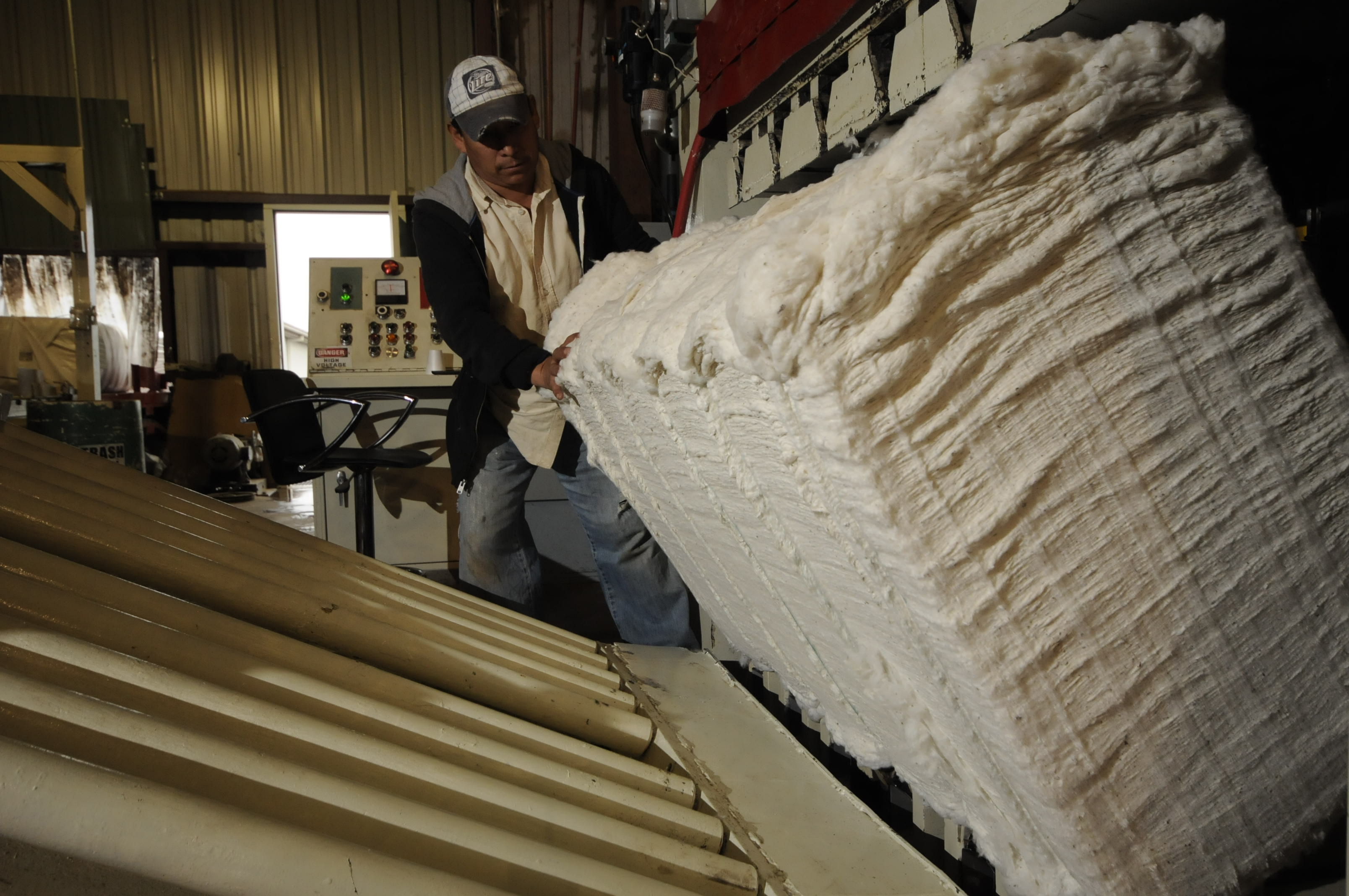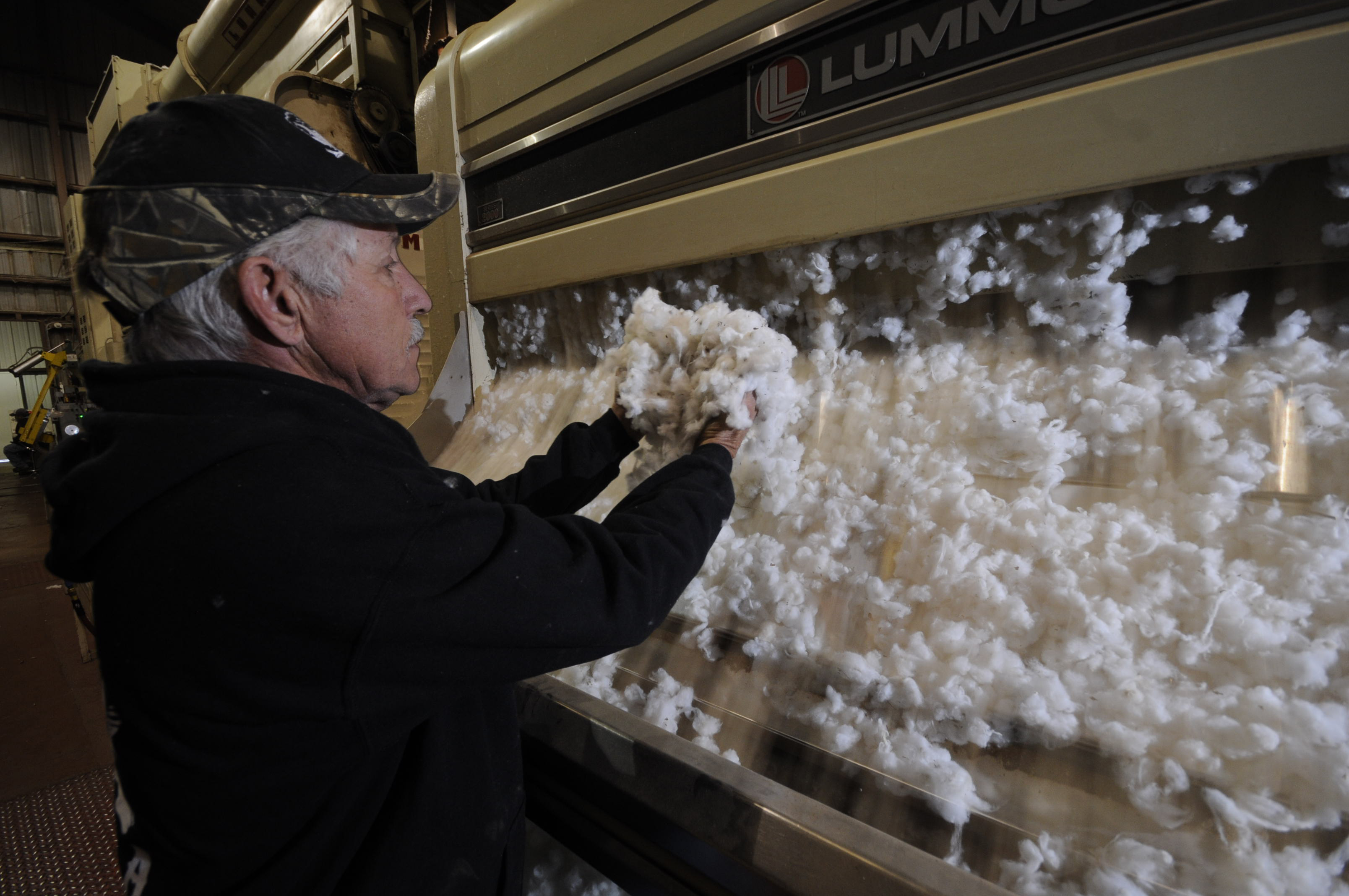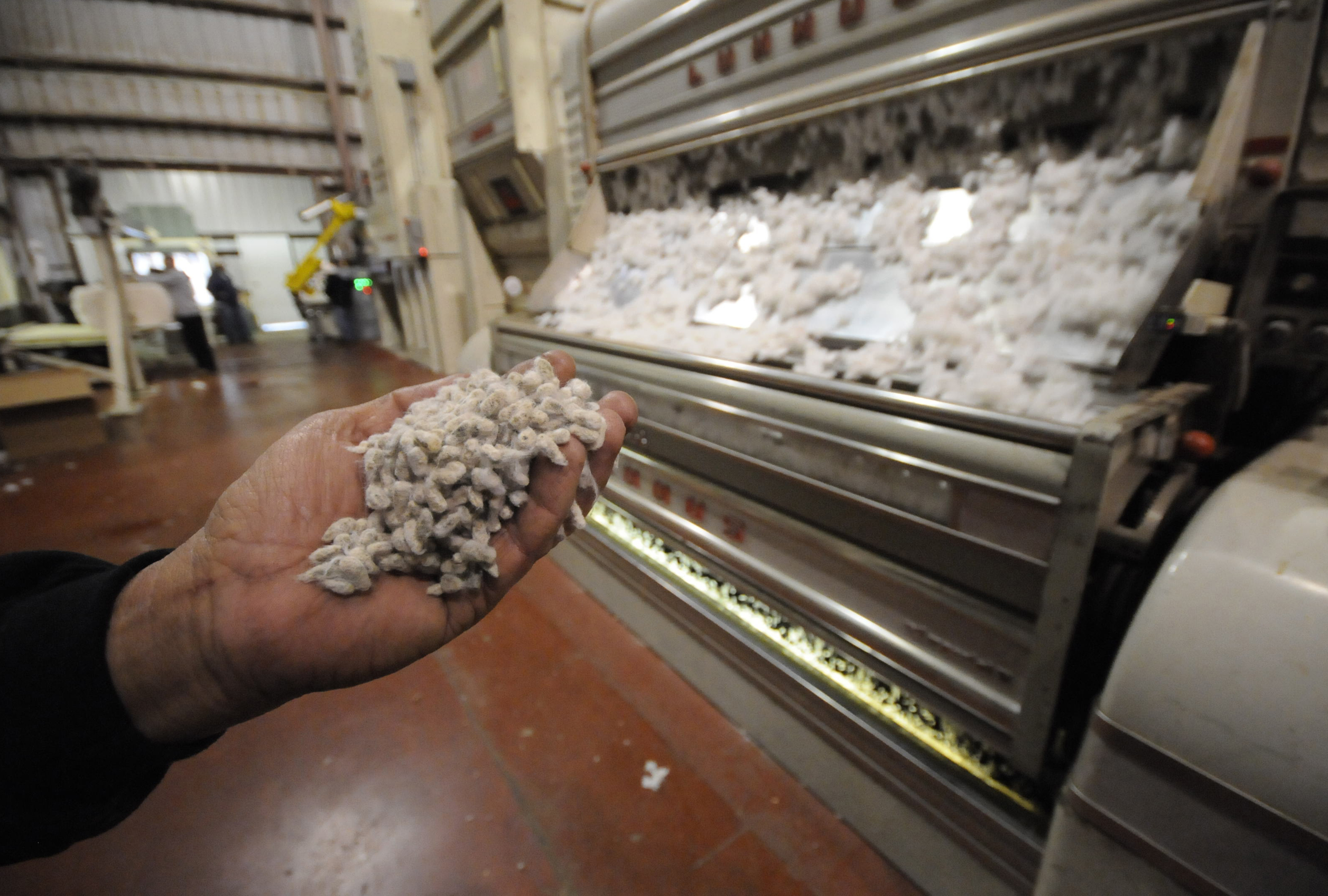TO LEARN MORE
Go here on the U.S. Department of Agriculture's website to see a diagram of a modern cotton gin operation and more information about how gins in the industry work.
ELORA, Tenn. -- On a drive from the top of Monteagle Mountain west across the southern Cumberland Plateau, many roads are lined with white cotton bolls ready for harvest or skeletal plants surrounding 10-foot-tall stacks of the fluffy, freshly picked product.
Those who travel mostly north and south on highways in the South might think cotton country lies toward the coasts or points west near the Mississippi River. But just over the Lincoln County line in Elora, Tenn., is Elora Gin Warehouse, the eastern-most cotton gin in Tennessee.
Jimmy and Kristie Brannon's family members run the operation, where a double handful of metal buildings are surrounded by thousands of acres of cotton.
Jimmy Brannon, 60, said he started working some at the gin as a teen in the 1960s when Kristie's father, David R. Owens, ran it at a site closer into town in Elora. It was moved in 1972 to its current spot on Limestone Road.
"I worked with him for 36 years till he passed away," Jimmy Brannon said, noting with a smile that he was Owens' "right hand" before becoming his son-in-law when he and Kristie Owens tied the knot in 1981.
The Elora Gin can clean a 480-pound cotton bale in less than two minutes, and it generates about 650 bales in 24 hours, Jimmy Brannon said.
In a good September to December season like 2011, the gin can process as many as 40,000 to 42,000 bales, he said.
The Brannons bought the operation in 2007 from Owens' estate, said Kristie Brannon. Now 52, she worked at the gin since her father built its first cotton warehouse in 1984, she said. In the 1980s, much of the work still was done by hand, she said.
A few parts of the modern process are unchanged from the days when Eli Whitney's invention of the cotton gin changed the industrial and cultural landscape of the South in 1793. Today's operations, however, are much more streamlined and technological, the Brannons said.
It's mid-season now, and the gin's specialized cotton-hauling trucks stream in from regional fields, loaded with "modules" of cotton. A module is a truck-sized block of picked cotton that machines in the fields pack together for transport to the gin.
In Elora, trucks deliver cotton modules to outdoor storage areas to wait their turn in the processing line, according to Kristie Brannon. The raw cotton is blown through large pipes to a dryer, then through equipment that removes sticks and stems before it heads to the company's three Lummus-brand gin stands.
In the gin, the seeds are blown into smaller pipes that lead to nearby seed warehouse buildings. Meanwhile, the cotton lint is blown into a collector, then dumped into a press and baling machine that ejects plastic-wrapped bales ready for storage in the warehouses, she said. Samples are taken from each customer's cotton to send to Memphis for classification used in pricing.
The ginning process separates the fluffy fibers from the patented Monsanto seed, which is sold as a cattle feed additive for dairy cows and for use by companies that crush it to retrieve valuable cottonseed oil, according to Kristie Brannon.
A common misunderstanding is that the seed removed from cotton is replanted to grow next year's crop, said Erin Reed, 33, one of the gin's owners. But the seed itself is highly guarded technology, she said.
"It's patented. It's like a $500,000 fine" to plant patent owner Monsanto's cotton seed, she said. Each season, they must buy new seed for planting from Monsanto, which is the lone source for the high-tech seed, she said.
During the season, Elora Gin's employees work almost constantly. All the gin's employees work seven 12-hour days per week from September to December, according to Kristie Brannon.
There's no lunch break, but lunch is delivered to each employees' work station so they can keep ginning cotton while they eat.
Reed said the company makes its money not from ginning, but from the cottonseed byproduct of the process. Most cotton ginned in Elora is exported to China, Mexico and Turkey, she said.
"We just gin it and store it. We gin for the seed," she said. "The cotton is generally sold when we gin it."
Processing the raw material that ends up as a 480-pound bale of cotton usually generates about 620 pounds of seed, she said.
"If the seed price is above what the ginning costs, the customers get a rebate," she said. "If the ginning costs more than what the seed costs, we eat the loss."
Watching the gin spill fluffy cotton lint and seed into the collection systems, Jimmy Brannon said the cotton business "gets in your blood" and the work is usually satisfying.
"There are times when you just want to throw your hands up," he said. "That goes with it. But it's enjoyable. It really is."
